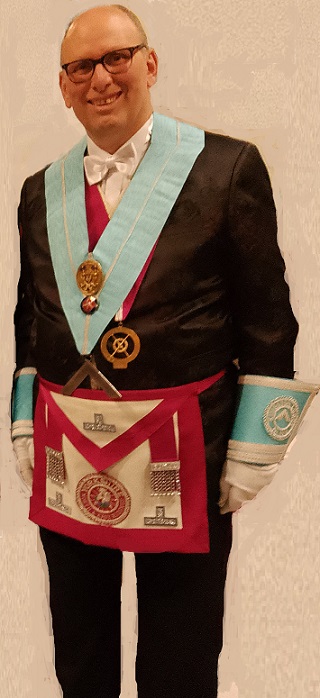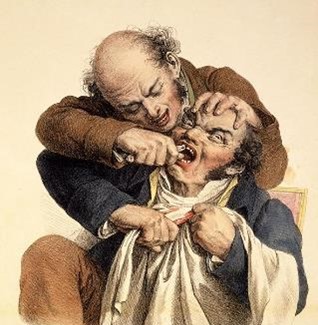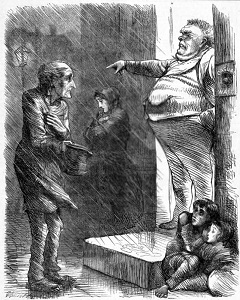--ooOoo--
NEXT CRAFT MEETING
Wednesday 1st May 2024
Demonstration 1st Degree Ceremony [Representative Visit]
--ooOoo--
NEXT CHAPTER MEETING
Wednesday 16th October 2024

Tracing Board Commissioned:
see the Blog Page for 26 April

--ooOoo--
NEXT CRAFT MEETING
Wednesday 1st May 2024
Demonstration 1st Degree Ceremony [Representative Visit]
--ooOoo--
NEXT CHAPTER MEETING
Wednesday 16th October 2024

Tracing Board Commissioned:
see the Blog Page for 26 April

 In older Lodges the Founders are but names on an Honours board, or unread names of long-dead Freemasons on the back of the summons. The Kingston connection with the Founders is somewhat stronger, however. It is from our Founders that we inherit the Lodge pecularities, known to visitors as 'The Kingston Way!'
In older Lodges the Founders are but names on an Honours board, or unread names of long-dead Freemasons on the back of the summons. The Kingston connection with the Founders is somewhat stronger, however. It is from our Founders that we inherit the Lodge pecularities, known to visitors as 'The Kingston Way!'
No-one would wish to adjust them they are part of our unique history. Freemasonry is steeped in traditions and while the world changes around us, they remain as relevant today as they did in 1864. I trust they will continue long after I am gone, the Victorian syntax notwithstanding.
Kingston Lodge 1010 was granted its Warrant of Constitution in 1864 authorising meetings to be held and Masons made. It also contained the names of the first Worshipful Master, Simeon Mosely: Senior Warden Martin Samuelson and Junior Warden Llewellyn Wood Longstaff, significent people, whose influence helped to shape the city as well as the Kingston Lodge itself.
So annually we hold our Founders Night, when we celebrate the formation of Kingston Lodge and recognise the continuance of the vision of those nineteenth century gentlemen, drinking a toast to their memory.
W. Bro Marcus Whereat (pictured) was the 150th Master of the Lodge. On Founders Nights the Master and his Wardens wear white bow ties and represent the founding officers.
It has become a tradition for a presentation to be submitted on this evening and below is the one given by the author of this article in 2023.
Founders Night Presentation
by Neil Armstrong

The Napoleonic wars, which ended in 1815 with the Battle of Waterloo, had taken a heavy toll on the nation, yet in London’s growing Jewish community, the Mosely family were celebrating the birth of a son – Simeon.
The Mosely family developed a thriving business as Surgeon-Dentists, proclaiming such patronage as the King of Hanover, the Duke of Cumberland, and other titled families of the realm.
Simeon was one of five brothers, who between them operated a vast family empire of dental practices both in London and the Provinces.
Just like Jacob’s sons in the Scriptures, Siblings Henry, Charles, Ephraim, Lewin, and Simeon brought out the worst in each other. The brothers combined and dissolved their different practices and partnerships often due to pure rivalry.
It was whilst Simeon was working in Northampton in 1840, that he was initiated into Freemasonry, at the Promfret Lodge 360 by his elder brother Charles who had become a mason a few years earlier in Kingston, Jamaica.
 The brothers were shrewd businessmen and capable of scenting any potential for profit. Kingston-Upon-Hull’s growing prosperity as a port was a place of opportunity for dentistry amongst the rapidly increasing middle-class population. Brother Ephraim worked primarily alone in Hull from 1842 with Simeon assisting on an ad hoc basis.
The brothers were shrewd businessmen and capable of scenting any potential for profit. Kingston-Upon-Hull’s growing prosperity as a port was a place of opportunity for dentistry amongst the rapidly increasing middle-class population. Brother Ephraim worked primarily alone in Hull from 1842 with Simeon assisting on an ad hoc basis.
By 1847, Simeon had fallen in love and married Jessie Walkinshaw at Kensington Register Office in London. She was the daughter of a plantation-owner in Trinidad, a descendant of Clementina Walkinshaw, the mistress of Bonnie Prince Charlie and by all accounts Jessie was bonnie too.
She was a family friend of his Brother Charles, who had married in the West Indies at the Ashkenazi Congregation Synagogue in Jamaica. Jessie had three daughters, all born in their London residence, the youngest being born in June 1850. Three girls under the age of five must have been quite a handful. Ephraim and Simeon’s partnership became dissolved in September 1850, Ephraim kept the London side of the business, and it appears that Simeon took up permanent residence at 15 Whitefriargate with Jessie and their three daughters.
Tragedy struck two years later, as Jessie died of a brain-disorder aged just twenty-seven. She was buried at her own instructions in St. Alban’s Cemetery Kensington in London, which would suggest she had not taken the Jewish faith.
Simeon’s unmarried sister Elizabeth came up from London to act as housekeeper and to look after his three girls, Alice, Gertrude, and Nina.
Despite this heartbreak, Simeon was a determined man, and clearly his mixed marriage did not prevent him becoming the President and driving force at Hull’s Robinson Row Synagogue, which was off Dagger Lane, not far from the present-day Minerva Lodge.
These were turbulent times, with many Jewish immigrants arriving in Hull from Europe in very distressed circumstances, and were often exploited, whilst on their journey to Liverpool and a new life in America. Simeon together with Bethel Jacobs, Solomon Cohen, and Harry Lazarus, helped set up soup-kitchens and accommodation for them, together with some financial relief. He displayed great tact and judgement during trying confrontations between newly arrived immigrants and the established Jewish community. Overcrowding at the Synagogue had led to scuffles, which on occasion had resulted in those involved being summoned before the magistrates.
 Simeon had renewed his links with Freemasonry, by joining the Minerva Lodge in 1850. He became their Worshipful Master in 1857, the same year the College of Dentists were founded, and of which he became a member. He supported the creation of a Benevolence Fund to assist Masons in distressed circumstances. He subscribed to numerous charitable appeals of the day; fellow Freemasons Bethel Jacobs and Solomon Cohen bore witness to his generous nature.
Simeon had renewed his links with Freemasonry, by joining the Minerva Lodge in 1850. He became their Worshipful Master in 1857, the same year the College of Dentists were founded, and of which he became a member. He supported the creation of a Benevolence Fund to assist Masons in distressed circumstances. He subscribed to numerous charitable appeals of the day; fellow Freemasons Bethel Jacobs and Solomon Cohen bore witness to his generous nature.
He was a popular and impressive Master, so much so that a fine portrait of him was painted by George Pycock-Green, the same artist who had produced the fimposing portrait of Queen Victoria which still hangs in our City Hall today.
Due to an overwhelming surge of membership at the Minerva Lodge, accommodation became difficult. So, three years later, a new Lodge was formed, Kingston Lodge 1010 of which Simeon Mosely became the first Worshipful Master.
It was customary then for Lodges to have a meagre supper of cheese and biscuits washed down with punch. Simeon wasn’t content with that, so he frequently provided a substantial banquet at the Royal Station Hotel at his own expense.
He maintained a keen interest in science and had many pursuits. He held a commission as a Captain of the Artillery Volunteers, a forerunner of the Territorial Army, as well as being a member of the Microscopic Society and the Literary and Philosophical Society.
Being blessed with a fine singing voice he was also a member of the local Harmonic society. Victorian Masonic Lodges often held charitable musical concerts, and he made a significant contribution both in time, talent, and money.
His expanding dental business flourished, and he was joined in Hull, by his eldest brother Henry Benjamin Mosely.
It might be thought that such widespread success in dentistry would bring great wealth, yet Simeon’s personal estate mounted to only £591. Simeon was described in his obituary as a ‘father to the poor’, a cultured Englishman of the old school, of gentle nature and keen human sympathies. A pillar of the Hull Hebrew Congregation. He would be deservedly missed by a large circle of friends…
…Friends who go some way to explaining the small size of his estate.
The wife of his brother Charles had died in childbirth in 1860. The same year, their only other child died. Bereft with grief Charles passed away himself the following year. He named Simeon as Executor of his will, instructing him to convert his estate into an investment, to provide an annuity for their sister Elizabeth and sister-in-law Abigail.
At this time, Simeon had become a Town Councillor, where he would have met regularly with the likes of Bannister, Moss, Samuelson, and Pearson.
Who better then to ask advice about investing, after all, Pearson was a successful shipping owner, a fellow mason, and a shrewd businessman.
The American Civil War was at its height and Hull’s two Cotton Mills had closed due to the lack of imported raw cotton from America. Many of Hull’s mill workers were laid off and destitute.
Pearson had been persuaded to acquire six ships on credit from the leading bankers of the day, Overend and Gurney. He now had more ships than he could find cargo for. So, he hatched a plan to run the ships through the American naval blockade, delivering goods to the Confederates and sail back to Hull loaded with raw cotton. The mills would then be back to work, a profit would be made, and all would be well.
Simeon would have been sympathetic to this philanthropic action and is likely to have been swayed into investing the money from his brother Charles’ will into this adventure.
What Pearson omitted to say, was that amongst the legitimate cargo going out, were hidden guns and ammunition for the Southern Confederates Army.
A risky venture. But, If it succeeded, Pearson would have become one of the biggest shipping companies in England.
Instead, disaster struck, all the ships were lost to the American Federal forces. Pearson went bankrupt and took down his fellow investors. who included Bannister, who had sold his shares in the Hull to Withernsea Railway prior to Pearson’s gamble. Samuelson and Moss were also very bitter, as they had invested, to raise more capital for their troubled shipbuilding company at Sammy’s Point, and of course it took down Simeon Mosely as well.
 He was ruined; his sister Elizabeth took him to court for the loss of her annuity. Despite the sale of his dental practice to his nephew Simeon junior to honour the debt, all was in vain, and he was declared bankrupt.
He was ruined; his sister Elizabeth took him to court for the loss of her annuity. Despite the sale of his dental practice to his nephew Simeon junior to honour the debt, all was in vain, and he was declared bankrupt.
All this strain aggravated his state of health,and the gout which had plagued him for some twenty years rendered him frail and infirm. His eldest daughter Alice now tended to him.
His embittered sister Elizabeth returned to London taking with her his youngest girl Nina. His other daughter Gertrude had left home some years before to become a Governess.
His death certificate states he died of prolonged gout, a condition of relentless torture.. As the condition advanced, it brought with it depression, coupled with chronic joint pain, and visible nodules in his joints. Finally, it attacked the vital organs resulting in kidney, liver, or pancreatic failure.
Poor Simeon Mosely would have suffered horribly.
Despite the pain and discomfort, he is recorded as having good humour until his death on the 13th October 1888. He was 73 years old.
A date infamous for ill fortune, Friday the 13th October, was the day, when King Philip of France carried out the mass arrests of the Knight Templars in 1307.
Simeon suffered too from ill-fortune, partly at his own hand, as he had become ensnared into the cynical manoeuvrings of the bankers Overend and Guerney.
But history must judge him by his deeds. He built up his wealth though his own hard work, and he went on to use part of it for the good of others, who were mainly the poor and voiceless.
Instead of leaving Hull once he’d made his money and living out his life in luxury as so many of his contemporaries did, he chose to stay and try to improve the lot of those less fortunate than himself.
He cared passionately for his fellow man. Before his death, one of his last recorded acts was to give a guinea, that’s 21 shillings (which is approximately £200 today) to a relief fund in aid of the persecuted Jews in Russia.
History often overlooks the ordinary man, however this evening we have remembered our first Worshipful Master who treated all as brothers, no matter how poor or challenging their social background may have been. with respect and fraternal friendship.
Simeon Mosely lived respected and died regretted.
 Neil Armstrong
Neil Armstrong
12th April 2023
Worshipful Master Mike Price with W Bro Neil Armstrong on Founders Night 2022.